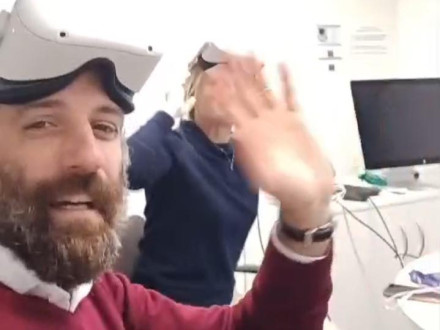Prof. Andrew Cook leads the Centre for Morphology & Structural Heart Disease at UCL’s Institute of Cardiovascular Science / Great Ormond Street Hospital, now based at the GOSH/UCL Zayed Centre for Research into Rare Disease in Children, London, UK.
He is active in research, education, training with expertise in the structural architecture of the heart during fetal development, in congenital & acquired adult disease, and is the founder of The Heart Academy.
Current research focusses on Organ-to-Cell Molecular Imaging (OCMI) using Hierarchical Phase Contrast Tomography (HiP-CT); Deep-phenotyping of congenital and structural heart disease using synchrotron imaging and HiP-CT; the use of VR and 3D immersive environments for dissemination & education; and structural anatomy for device design.
Související
Zobrazovací metody se rozvíjejí nejrychleji ze všech specializací v medicíně
S prof. Janem Markem o unikátním kardiologickém výukovém programu a nejnovější technice zobrazení (nejen) srdce
Can you describe what a synchrotron is and how it helps in imaging the heart?
A synchrotron is like a small particle accelerator, about the size of a football stadium. It speeds up electrons to nearly the speed of light using magnets. These electrons emit X-rays, which are much more powerful—about a billion times stronger—than the X-rays used in hospitals for things like broken bones. The X-rays from synchrotrons are also more precise, with waves that are perfectly aligned, similar to laser light.
When these X-rays pass through soft tissue, such as a heart, they refract, or bend, just like light would when it goes through a transparent medium like water or glass. Refraction causes a shift in the X-rays that depends on the tissue's density. Special high-resolution cameras can detect this change, and after processing the data, we can create detailed 3D images of the heart, from the whole organ down to the cellular level. We can even distinguish previously ‘invisible structures’, like the heart's electrical wiring. In our research, we have used two techniques: X-ray Phase Contrast Imaging for small samples and Hierarchical Phase-Contrast Tomography for larger—adult-sized—hearts.
What challenges did you face when using the synchrotron?
As you might expect, the main challenges are technical and a full team is required for this sort of imaging, ranging from physicists, to specialist synchrotron beamline scientists, to engineers, and of course, specialists in heart structure. All need to work in unison to obtain the best heart images. When we first started out, a lot of these processes were manual. It took approximately half a day to image two-centimetre volume of tissue, and many additional hours to reconstruct. That was in 2017. Some six or seven years later, with optimisation of serial scans, reconstruction, and automated stitching, we can now do the same procedure in about twenty or thirty minutes.
There are then logistical challenges in getting samples safely to and from facilities based in different countries and building a team for imaging. When beamtime is allocated, the team will work 24/7, sometime for five days in a row, in order to maximise use of their time in the facility.
How big are these data?
This is also a major challenge for us to be able to handle these extremely large datasets. As an example, our smallest hearts are twenty gigabytes once reconstructed, which increases to between half and six terabytes for adult hearts scanned at twenty to eight micrometres voxel resolution.
The HiP-CT myomapping can recognize the heart down to 20 micrometres – half the width of a human hair. Why it is beneficial to see the heart in such a detail?
If we are to map the organisation of the myocardium in detail then we need high resolution images. Heart muscle cells in adults are fifteen to twenty microns in width, so we are close to single cell resolution at a voxel size of twenty micrometres. However, we need a minimum a three voxels to map orientation so myomapping results are at sixty micrometres, or three to four myocyte widths, at a minimum. We can also myomap at two microns in smaller ‘regions of interest’. And for small one-to-two centimetre biopsies, we can go even further down to 0.3 micrometres, which is equivalent to the size of a bacteria and means we can map capillaries, the smallest vessels in the heart, which are one to two microns in diameter.




